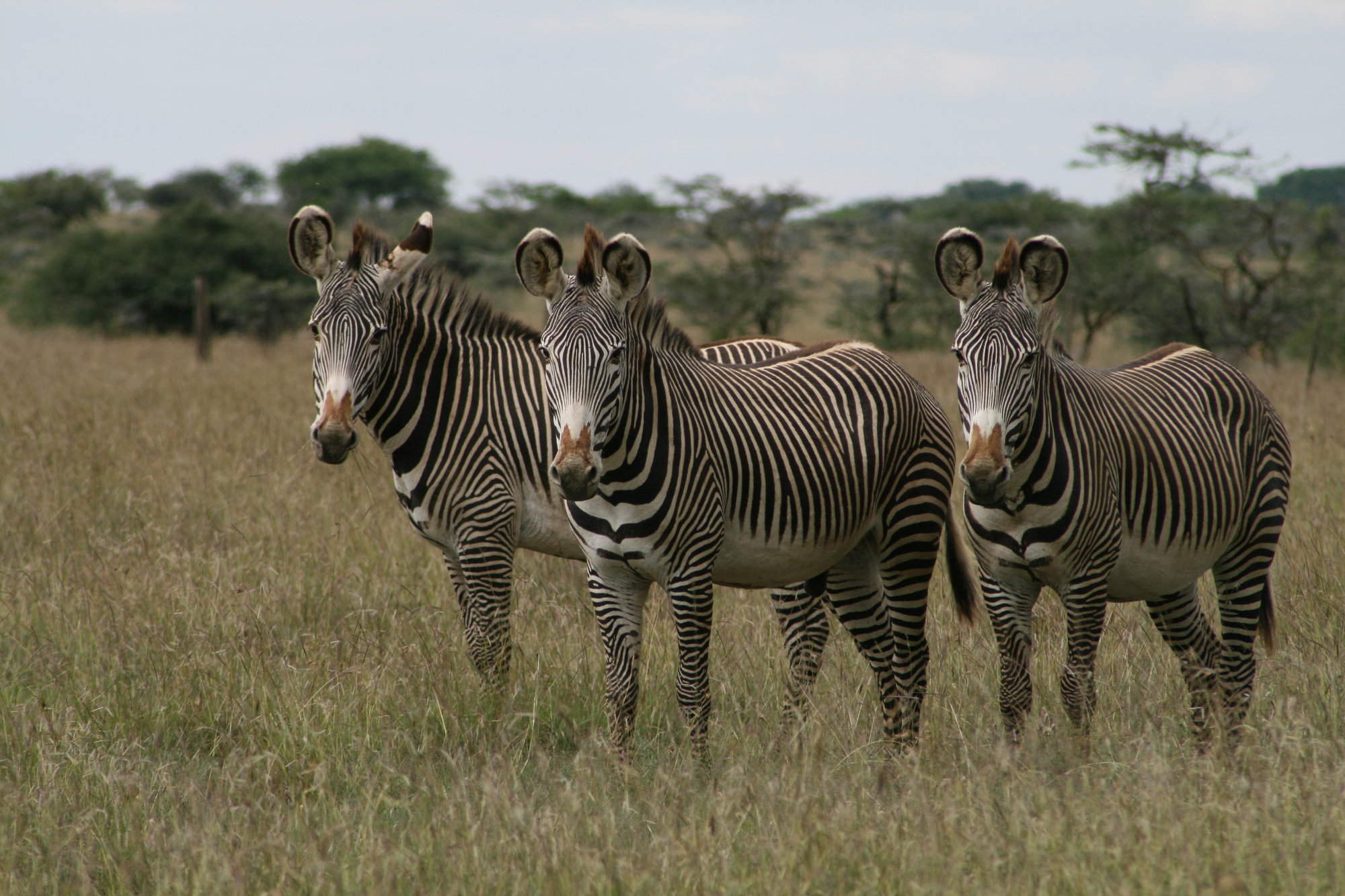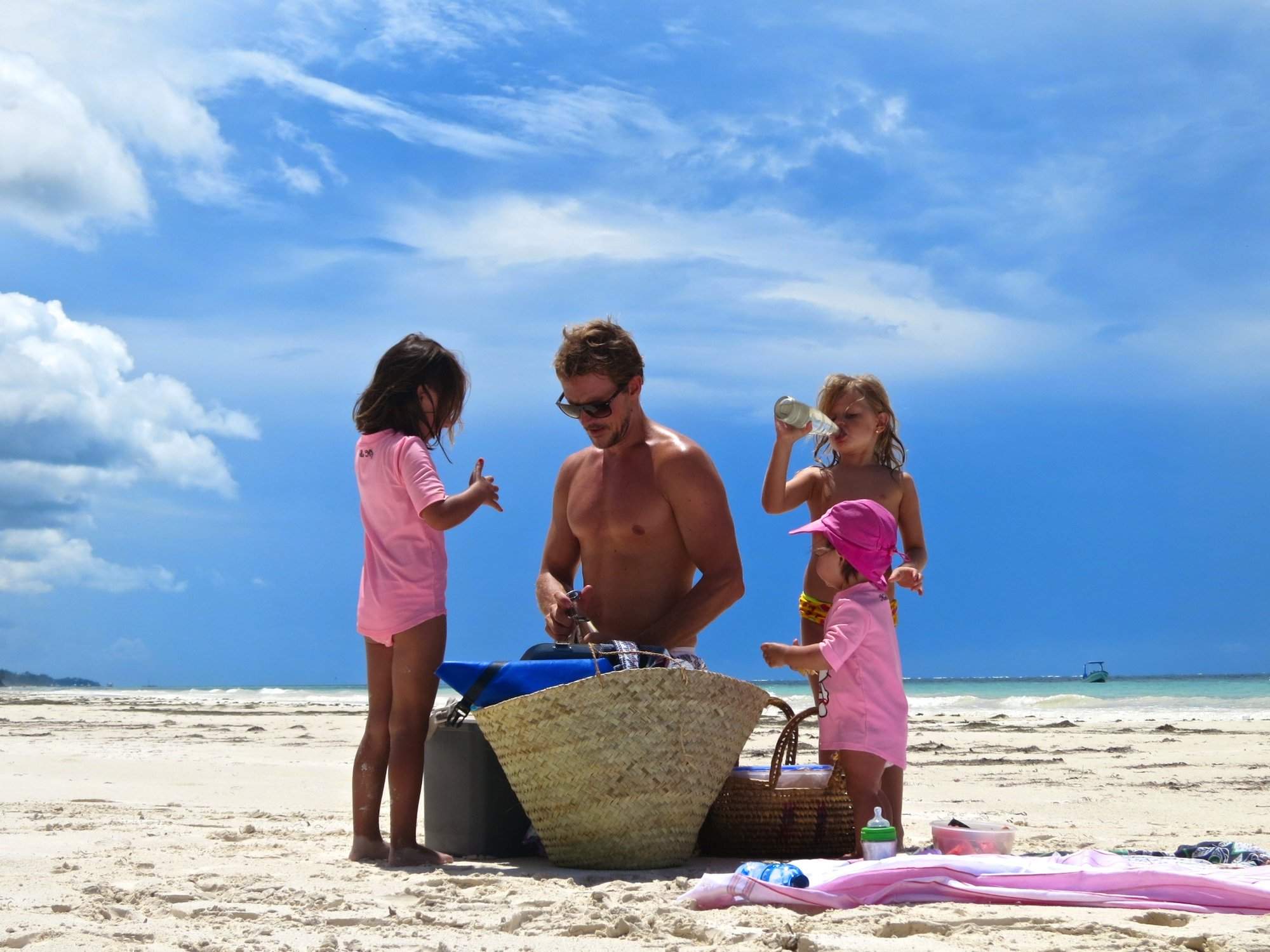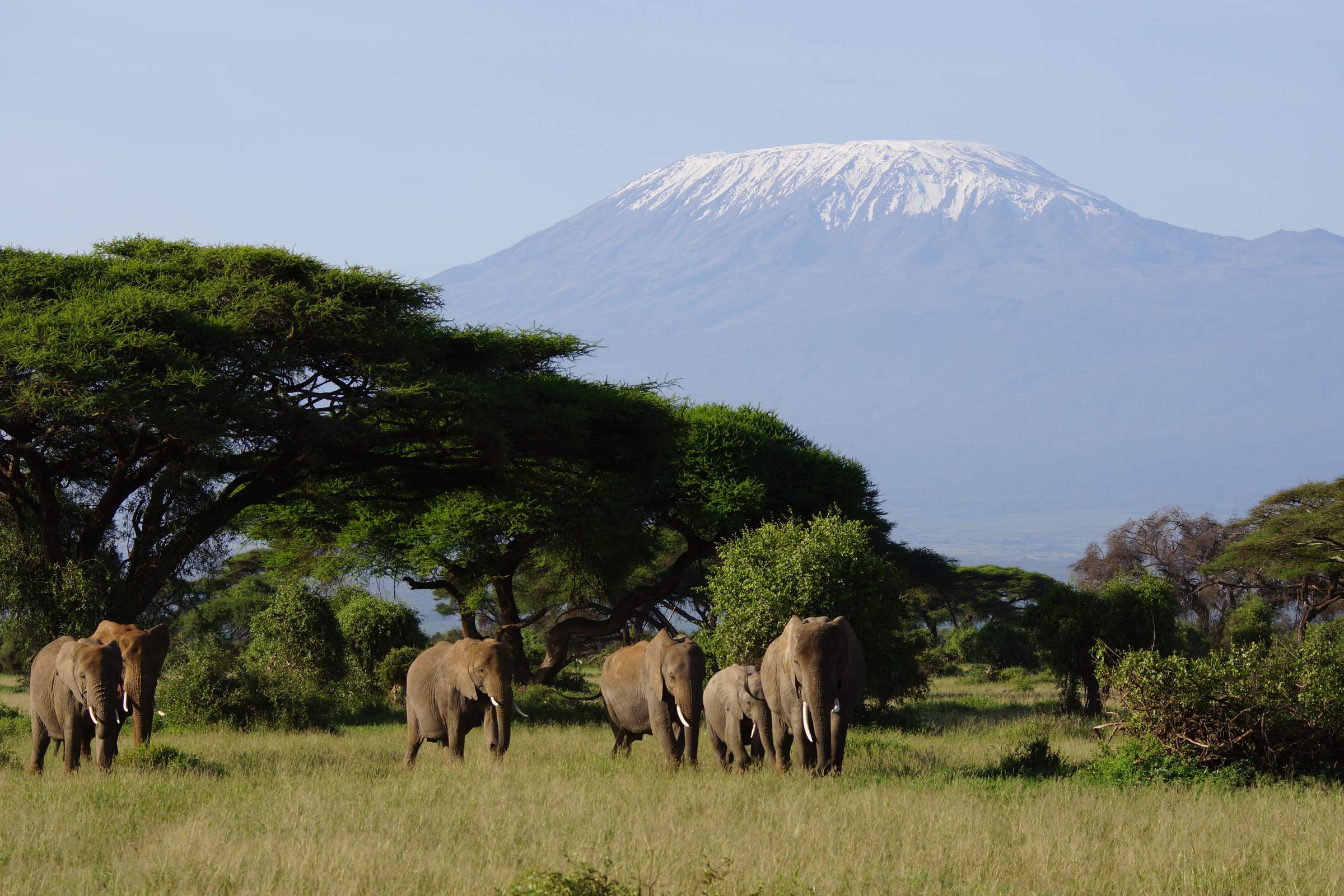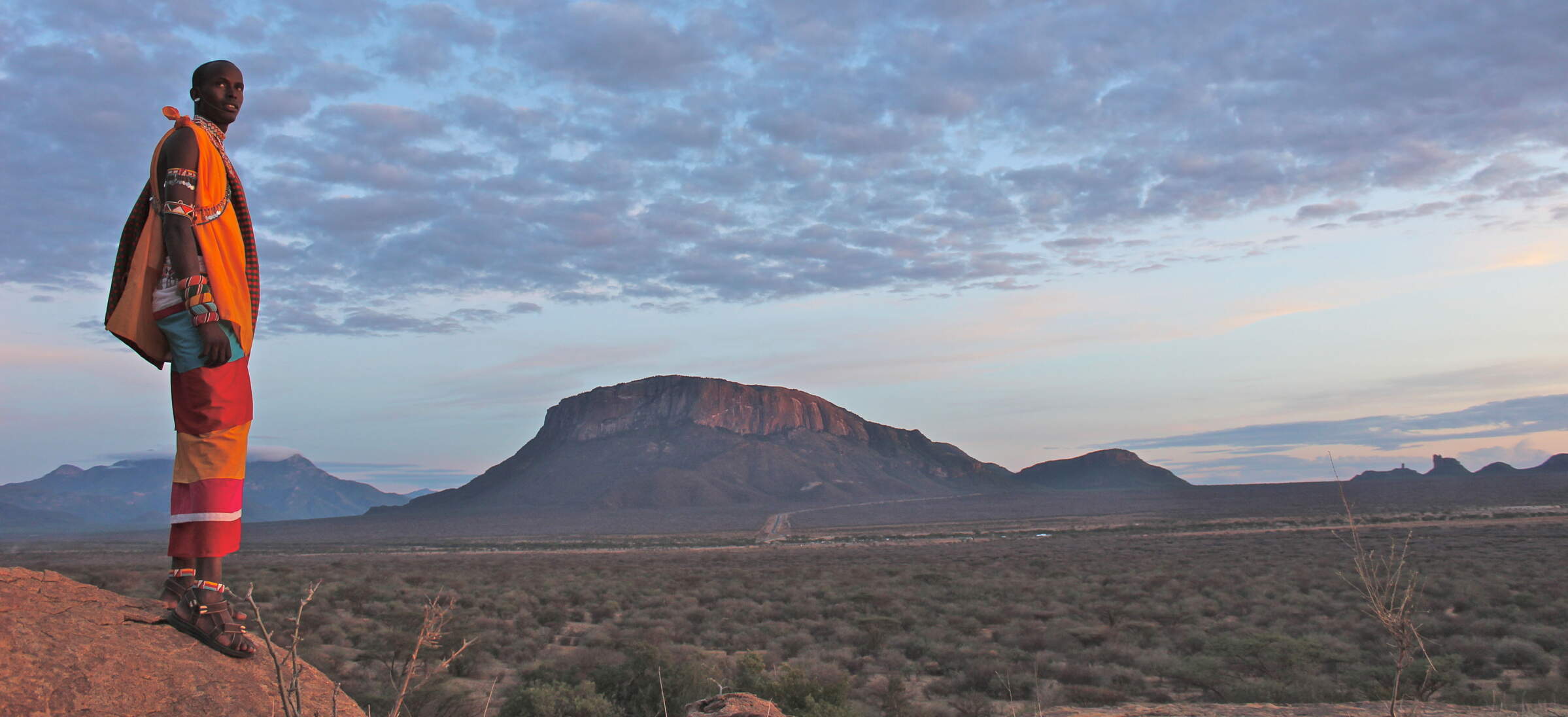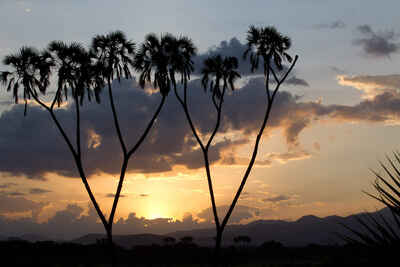
Meru National Park is a little visited park east of Mount Kenya.
It offers some excellent wildlife-viewing…
Expert Africa offers just a handful of small camps and lodges here.
Meru National Park
Meru National Park
Immortalised in the book and film Born Free, Meru National Park is where Elsa the lioness was released into the wild.
Meru National Park is increasingly re-appearing on safari itineraries. After it was founded in 1966, the park, run by one of Kenya’s most energetic wardens, Peter Jenkins, was a popular destination for safaris. But it fell into neglect in the 1980s, and for more than a decade, into the late 1990s, this entrancing wilderness was virtually off limits due to out-of-control poaching. Then, championed by the International Fund for Animal Welfare, with the support of the EU, the park became a KWS cause célèbre and was comprehensively restored, with newly cut earth roads, a dedicated force of rangers led by a new warden (Peter Jenkins’ son Mark Jenkins), and a poacher-proof rhino sanctuary near the main gate which is home to both white and black rhinos.
Despite its relaunch, Meru is still one of the least visited of Kenya’s big parks, which from the visitor's point of view is all to the good: this unspoiled 870km² stretch of well-watered, dense bush, acacia woodland and verdant, tall grasslands spiked with weird-looking doum palms is ripe for discovery. It has game viewing which now easily matches or exceeds the sort of safari experience you’ll have in popular parks such as Tsavo West or Tsavo East, with increasingly frequent sightings of all the ‘Big Five’, plus cheetah and numerous other savannah species. And its handful of camps and lodges includes the exceptionally beautiful Elsa’s Kopje and two boutique, riverside safari camps (both with swimming pools) – Rhino River Camp and Offbeat Meru.

Safaris visiting Meru
Just ideas, we'll always tailor-make a trip for you

Black Kite Fly-in Safari
10 days • 4 locations
NAIROBI AIRPORT TO NAIROBI AIRPORT
Explore Kenya in-depth with visits to Nairobi and Meru national parks, the Mara Conservancies and Amboseli. Nestled in remoter regions, four camps provide fantastic access to rich game, a range of activities and beautifully diverse landscapes.
US$10,410 - US$14,150 per person
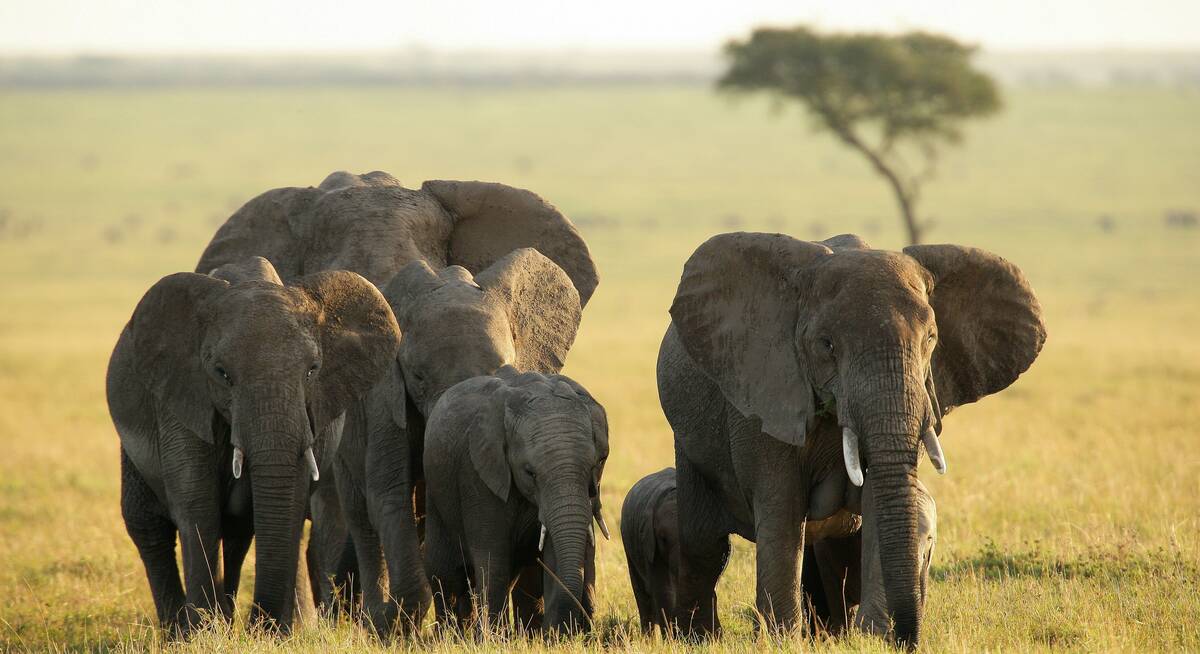
Peregrine Falcon Fly-In Safari
6 days • 2 locations
NAIROBI AIRPORT TO NAIROBI AIRPORT
Discover two of Kenya’s quieter wildlife havens with visits to Meru National Park and Mara North Conservancy. Top-quality sister camps provide considerable comfort and a range of activities by which to explore the game-rich surroundings.
US$7,840 - US$8,980 per person
Most recent reviews of our safaris to Meru
Click below to browse all 25 reviews from Meru National Park. All from our travellers; all are in full & unedited.
Arrived 27 Jan 2025, 16 nights
"My Jan 2025 trip"
Overall rating: Excellent
Arrived 9 Jan 2025, 18 nights
"My Jan 2025 trip"
Overall rating: Excellent
Arrived 12 Oct 2024, 15 nights
"My Oct 2024 trip"
Overall rating: Excellent
Arrived 15 Sep 2024, 24 nights
"Our Sep 2024 trip"
Overall rating: Excellent
Arrived 12 Sep 2024, 15 nights
"My Sep 2024 trip"
Overall rating: Excellent
Arrived 15 Aug 2024, 7 nights
"My Aug 2024 north kenya adventure"
Overall rating: Excellent
Arrived 6 Feb 2024, 14 nights
"My Feb 2024 trip to Kenya "
Overall rating: Excellent
Arrived 16 Sep 2023, 30 nights
"Our 2023 trip to Kenya"
Overall rating: Excellent
Arrived 20 Jan 2023, 15 nights
"Return to Kenya after 36 years"
Overall rating: Excellent
Arrived 16 Jan 2023, 13 nights
"What a wonderful holiday!"
Overall rating: Excellent
Where to stay in Meru
Our suggestions for safari camps in Meru National Park
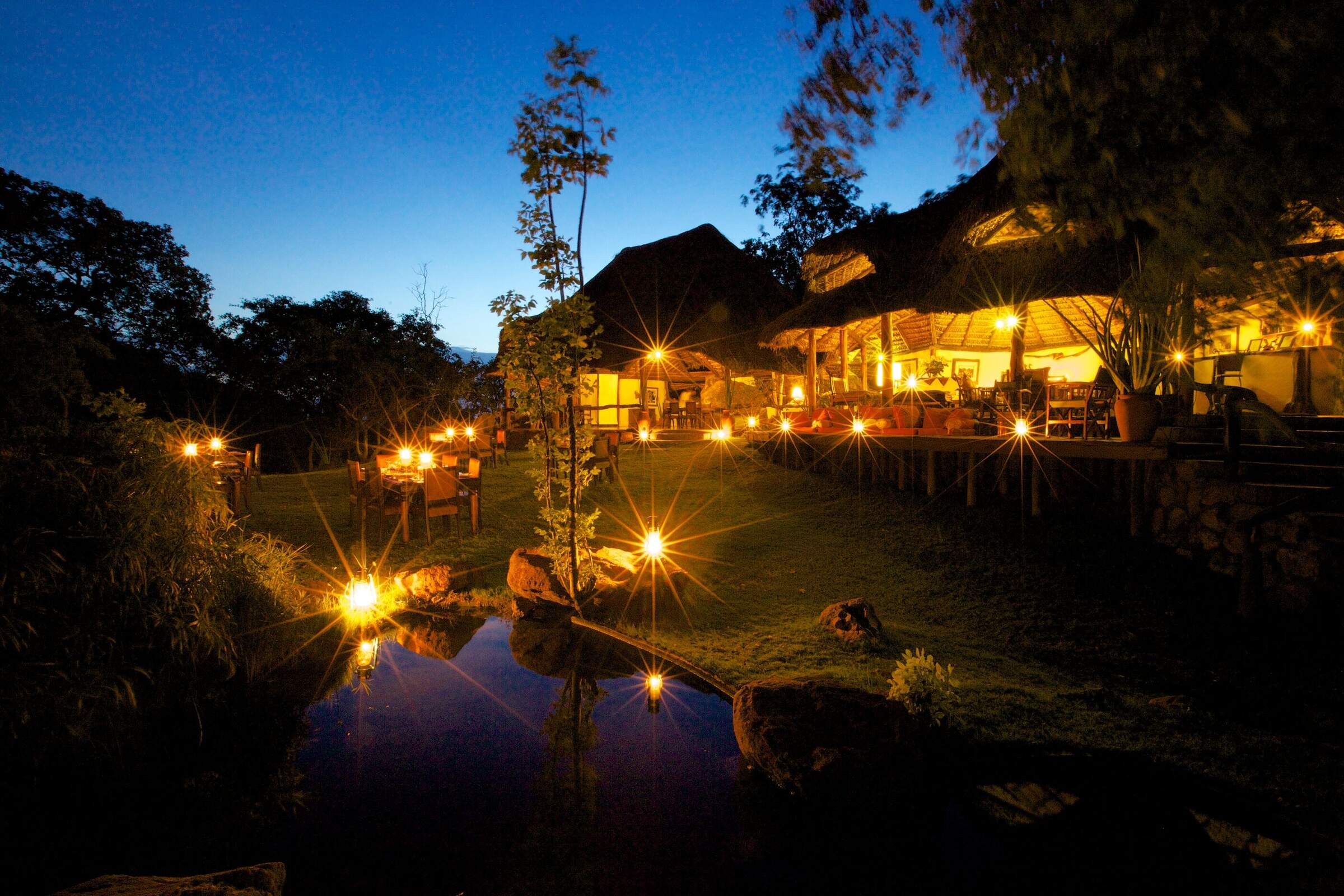
Elsa's Kopje
Elsa’s Kopje is the most luxurious option in Meru National Park, with unique rooms built around the natural hilltop environment, and stunning vistas in every direction
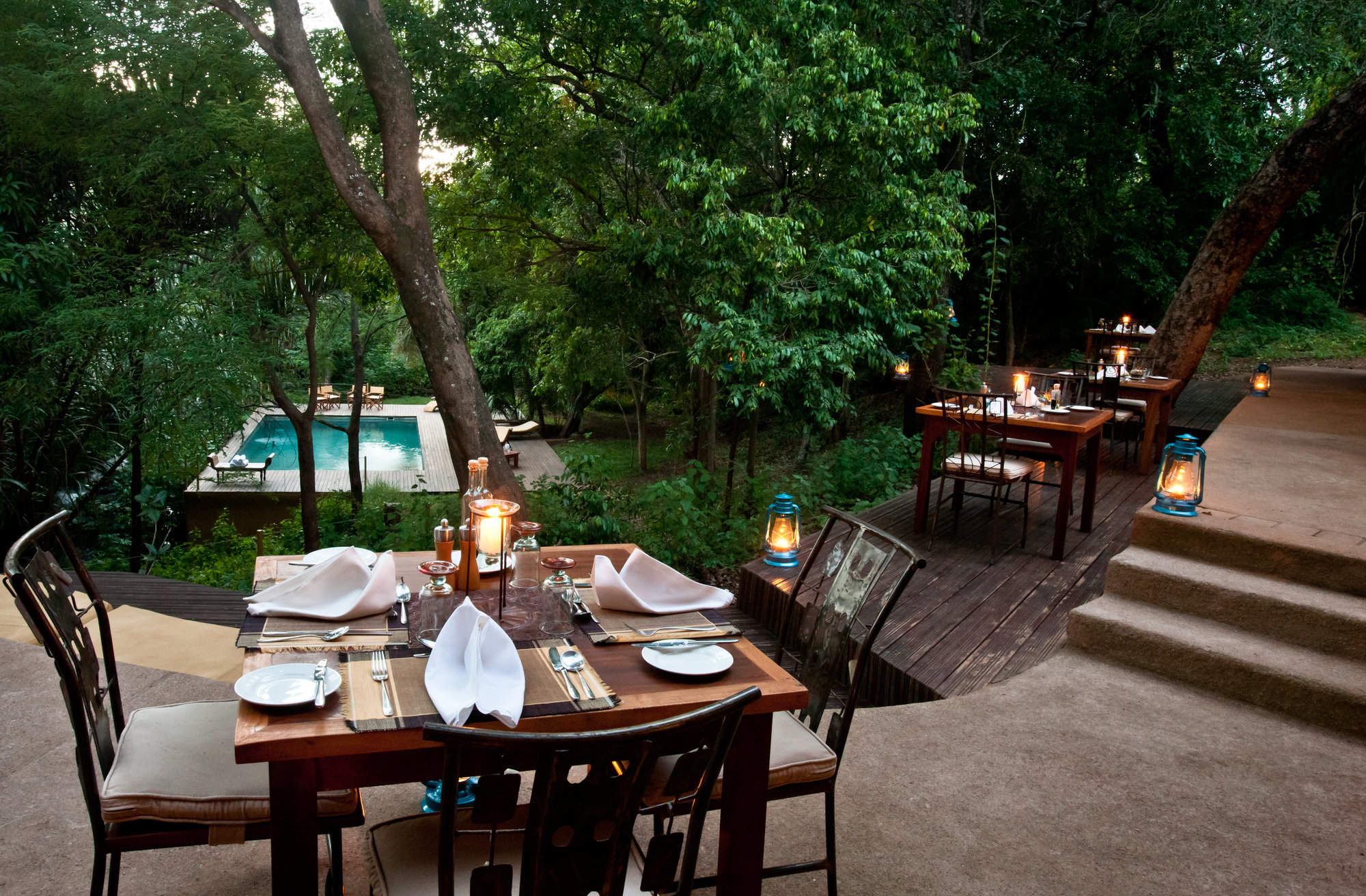
Rhino River Camp
Rhino River Camp is a pleasant safari camp nestled in deep forest next to Meru National Park's rhino sanctuary.
Our travellers’ wildlife sightings in Meru
On our visits to Meru in recent years, we’ve had good luck with predator sightings, including lions and cheetahs, and we rate the overall wildlife-viewing here highly. The characteristic northern varieties of plains mammals are easily seen – magnificent reticulated giraffe, fine-striped Grevy’s zebra, dapper Beisa oryx, skittish and beautifully marked lesser kudu and the distinctively long-necked browsing gerenuk gazelle. You’ll also see Grant's gazelles (though not Thomson’s) and some of the biggest herds of buffalo you’ll encounter anywhere in Kenya, as well as good numbers of elephants. All the mammals thrive because of Meru’s abundant water, and in many of the streams and rivers you can see crocodiles, freshwater turtles and hippos.
Click on a species below for more information on the top locations in Meru for wildlife sightings, based on sighting reports from our travellers. How we work this out.

100% success

100% success

100% success

100% success

95% success

95% success

95% success

90% success

79% success

56% success

56% success

30% success

26% success

6% success

0% success

0% success

0% success

0% success
When to go to Meru National Park
Our month by month guide: What it's like to visit Meru in Kenya
Jan
Feb
Mar
Apr
May
Jun
Jul
Aug
Sep
Oct
Nov
Dec
Kenya in January
Clear, hot days and warm nights make this high season a popular time for safaris and it’s also good for diving and snorkelling as water clarity is excellent and gets better as the dry season progresses. Most lodges and tented camps treat January after the New Year week is over, as mid-season, making it a good compromise in terms of value for money with reasonably reliable, dry weather and some greenery left in the landscape.
Expert Africa bases its description of climate and weather in January, like the other months of the year, on the climate records of roughly the last 100 years, and it's fair to say that the weather and seasons since the beginning of this century have been highly irregular and unpredictable.
- On average, January is the second driest month of the year
- Elephants dig waterholes in the dry riverbed in the Samburu reserve.
- Wildebeest and many antelope have their calving season, to February.
- Migrant birds are seen in huge numbers, especially in the Rift Valley.
- Sea water clarity around the coral reefs generally good.
Our view
Fantastic: the very best time to visit
Weather in January
Kenya in February
With the short dry season well established, the grass grazed down and wildlife gathering close to water points, this is still a good time for a safari. Good water clarity in the Indian Ocean's coastal waters makes for excellent diving and snorkelling conditions.
Expert Africa bases its description of climate and weather in February, like the other months of the year, on the climate records of roughly the last 100 years, and it's fair to say that the weather and seasons since the beginning of this century have been highly irregular and unpredictable.
- On average, February is the driest month of the year.
- It’s sometimes possible to swim with whale sharks at Diani Beach.
- Migrant birds are still seen everywhere, especially near water.
- This is usually peak calving season for wildebeest and many antelopes.
- This month is often the hottest of the year, especially on the coast.
Our view
A very good time to visit
Weather in February
Kenya in March
Hot, increasingly humid weather – with good diving and snorkelling conditions at the start of the month – gives way to rains and lower accommodation costs. Expert Africa bases its description of climate and weather in March, like the other months of the year, on the climate records of roughly the last 100 years, and predicting the seasons since the beginning of this century has been difficult.
March is the month when – traditionally – intensely hot conditions build up until a cloudburst finally happens at the end of the month or in early April, to relieve the humidity. As ever, regional variations across the country can greatly impact on visitors' experiences.
- Sea-water clarity is best for diving before the long rains start.
- Visitor numbers are low, though the Easter holidays can be busier.
- Night skies can be scintillatingly clear in early March.
- Cropped down savannah grasses can make it easier to see the wildlife.
- Temperartures climb high, especially at lower elevations.
Our view
A good time to visit, with pros & cons
Weather in March
Kenya in April
April sees the full onset of the southeast monsoon wind or kusi, which heralds the long rains. Temperatures drop soon after the rains are established and you’ll often have facilities largely to yourself in this more affordable low season, sometimes known as the "green season". The bush quickly springs to life, with greenery sprouting almost before your eyes. While you're likely to get a fair number of heavy showers, the breaks in the rain can yield sparklingly clear conditions.
With the dust settled and bright sun piercing the clouds, conditions can be sublime for photography, especially first thing in the morning or in the late afternoon with another storm brewing. You may be lucky, or you may find conditions very wet and muddy.
- A wet month, the coast often gets more than 300mm (12in) of rain.
- Sunny spells can provide great light for photography.
- Buffalo and zebra calving season often happens in this month.
- Baby crocodiles hatch, for example on Central Island in Lake Turkana.
- Palearctic migrant birds gather to fly north to breeding grounds.
Our view
A time to avoid if possible
Weather in April
Kenya in May
While game viewing can be trickier as vegetation runs riot, between the cloudbursts the colours and light are great for photography at this time of year. Expert Africa bases its description of climate and weather in May, like the other months of the year, on the climate records of roughly the last 100 years, and while it's reasonable to expect heavy rains in many parts during this month, especially on the coast, the rains don't always come evenly or in some areas come at all.
In an El Niño year, the so-called long rains that normally are established across much of the country by May can be meagre, to the despair of farmers. On the other hand in a La Niña year, the long rains can bring floods. On the coast, the monsoon winds make the climate much more predictable, with heavy rains common throughout this month.
- Frogs breed in the ponds in the Arabuko Sokoke Forest near Watamu.
- Wildebeest, impala and other grazers are in rut (the breeding season).
- Kilimanjaro looks its best as heavy rain falls as snow on the summit.
- There's a sharp peek of rainfall on the coast with many rainy days.
- Accommodation prices are uniformly low, while some camps close.
Our view
A time to avoid if possible
Weather in May
Kenya in June
The rains give way to cloudy, cooler weather, often making for comfortable conditions by the end of the month, especially in the highlands. Starting from mid-June or the beginning of July and running until the end of October, this is the high season, and accordingly has higher accommodation rates and – at least until early September – higher numbers of visitors.
While the early part of June can often be rainy on the coast, it can be a great time to go on safari, with fresh greenery, many young animals and good photographic conditions with clear air.
- The Taru Desert, inland from the coast, is carpeted with flowers.
- The Lake Turkana Cultural Festival is held in Loiyangalani.
- Madaraka Day (commemorating self rule) is 1 June.
- The annual Lewa marathon runs a course through the wildlife.
- The Diani Rules "sports" event rips up the rulebook at Diani Beach.
Our view
A good time to visit, with pros & cons
Weather in June
Kenya in July
Kenya’s “winter" season sets in (winter is a misnomer but locals feel the change), and the highlands can be rather grey. Skies are often cloudy and the days can be surprisingly cool, with an average daytime high in many highland safari areas of 15-20°C and night-time temperatures dropping below 10°C in Nairobi and the highlands. Lower parts of the country and the coast are usually warm and dry, typically reaching highs of around 25°C with lows in the high teens.
As this is the start of the high season, coinciding with the usual arrival of the wildebeest migration in the Maasai Mara, July is a busy month. Ask your Expert Africa specialist to advise on how to avoid the crowds, which is not that difficult to do.
- The wildebeest migration usually reaches the Maasai Mara in July.
- Simbi Lake (Kisumu) and Crater Lake (Naivasha) can attract flamingoes.
- Watersports start to pick up and some surfing is possible at Malindi.
- Afternoon thunderstorms are a common feature in the Maasai Mara.
- The sea can be choppy along the coast, making diving difficult.
Our view
A good time to visit, with pros & cons
Weather in July
Kenya in August
The Great Migration fills the plains of the Maasai Mara, and school’s out, so the park roads are full of tourists – ask your Expert Africa specialist for advice on crowd avoidance tactics. Choose a private conservancy rather than a public national park or national reserve for quieter conditions.
Like July, August is generally mild and relatively dry in the safari areas, but it can be very chilly in the highlands, even in the middle of the day, and hail occasionally falls above altitudes of around 2,400m (8,000ft). Nairobi can be disappointingly overcast, with low cloud.
- Apart from Christmas holidays, this is the busiest month of the year.
- Late August sees peak wildebeest drama at the Mara River crossings.
- Coastal winds are good for kite- and wind-surfing.
- Few mosquitoes are around at this generally dry time of year.
- The annual Camel Derby takes place in the Samburu capital, Maralal.
Our view
A good time to visit, with pros & cons
Weather in August
Kenya in September
The skies clearing of cloud signals the start of hot, dry weather with little chance of rain – and, after the first few days of the month, far fewer visitors – making the latter part of September a good time for a quieter safari. While early September is often good for dramatic migration crossings along the Mara River, you might consider deliberately postponing your trip until later in the month, when the migration can still be very impressive and visitor numbers fewer.
If tourist surges are somewhat predictable, however, the patterns of the wildebeest migration are more volatile, and like all of Expert Africa's climate and weather assessments, they are based on accumulated years of experience rather than guaranteed certainty.
- This is still high season, with prices to match.
- Many river crossings take place on the Mara river in both directions.
- Natural bush fires flush out insects and small animals for predators.
- The Rift Valley Music Festival takes place by Lake Naivasha.
- With school holidays over by early September, late-month is quieter.
Our view
Fantastic: the very best time to visit
Weather in September
Kenya in October
Still hot, mostly dry and not too busy, this is many people’s preferred month for a safari, and it’s also good for diving and snorkelling. The wildebeest and zebra herds of the great migration are often still to be seen, though in dwindling numbers. The swamps of Amboseli attract thirsty wildlife including large herds of elephants.
While we wouldn't expect much rain across most of the country this month, the climate has become so unpredictable that you can never say never, and the possibiity of the short rains – usually associated with November to mid-December, starting early, can't be discounted.
- This month sees the tail end of the great migration in the Mara.
- Palearctic migrant birds start to arrive, staying until March.
- Turtle nests hatch at Watamu, until November.
- Amboseli elephants focus on the swamps for their daily water.
- The Indian Ocean monsoon winds turn from southeast to northeast.
Our view
A very good time to visit
Weather in October
Kenya in November
The northeast monsoon wind or kaskazi heralds the start of the “short rains", usually some time in the second half of the month. From November to mid-December, this is the low season, and accordingly has lower accommodation rates and lower visitor numbers. Across most of the country you can expect warm, somewhat cloudy weather, with occasional heavy showers and localised flooding.
Expert Africa bases its description of the climate in November, like the other months of the year, on the records of roughly the last 100 years, and it's fair to say that the seasons since the beginning of this century have been highly irregular and unpredictable: some years the short rains don't come at all, or don't reach every part of the country. In an El Niño year, the November short rains can be very heavy, but in a La Niña year, they can fail completely.
- Swimming with dolphins in Lamu can be done from now until April.
- Birders gather at Ngulia in Tsavo West to ring Palearctic migrants.
- The Lamu Cultural Festival takes over the town and Lamu Creek.
- Agricultural shows often take place regional market towns.
- This is low season, so camps can be great value, with special offers.
Our view
A good time to visit, with pros & cons
Weather in November
Kenya in December
In a typical December, the rains usually finish by middle of the month, leaving the landscape looking its best, under clear blue skies, and heralding the start of the second peak tourist season from around 20 December to the first week of January. Our assessment of the likely weather in December, like the other months of the year, is based on climate records, and it's fair to say that the seasons since the beginning of this century have been highly irregular and unpredictable.
Christmas can sometimes be wet, but most years the rains have finished a week or two earlier, with the festive season ushering in the perfect combination of clear skies and sunshine by day and starry nights.
- Christmas and New Year are busy, with the lodges and camps full.
- Rates are highest after 24 Dec, with supplements on public holidays.
- Republic Day and Independence day are celebrated on 12 December.
- Good kite- and wind-surfing restarts, with strong northeasterly winds.
- Mango season begins, providing excitement for primates and elephants.
Our view
A good time to visit, with pros & cons
Weather in December
Meru National Park: In detail
Meru National Park
Meru’s numerous streams and rivers are a characteristic feature of the landscape.
Be sure to visit the Rojewero viewpoint and boardwalk – a lovely spot to stretch your legs and take in the dense riverine forest. There are good hippo, croc and fish-eagle-spotting opportunities in the area. Driving around Meru National Park through the thick bush, you’re also likely to have close encounters with some of the park’s huge herds of buffalo – the key prey for Meru’s lion prides.
As well as morning and evening game drives, if you’re in Meru National Park for several days, you might want to include a full-day drive down to the south of the park. The grave of Elsa the lioness is out in this remote area on the north bank of the Ura River, a major tributary that forms the parks’ southwest boundary.
Geography of Meru National Park
Bisanadi National Reserve forms the continuation of the park to the east, while on the other side of the Tana River, to the south, lie North Kitui National Reserve and the much bigger Kora National Park. These three wildlife areas are not yet easily visitable.
Meru National Park gets the most rain in its higher, northwest districts, which lie at an altitude of around 1000m, and the park gets progressively drier as you head southeast towards the Tana River, where the altitude averages around 300m and temperatures are correspondingly higher. The dozens of streams meandering through the park flow down from the Nyambeni Hills in the northwest, and pour into the Tana, Kenya’s largest river, which forms the park’s southern boundary. Because of the lattice-like network of south-east-flowing streams, much of the park feels like a patchwork of long ‘islands’ between the streams, with park roads looping back and forth over crossing points.
Much of Meru is flat or gently undulating and huge areas are thickly covered in a base of tall grass savanna, which makes game-viewing quite challenging during and shortly after the main rainy seasons in May and November. As the dry season sets in, the grass is steadily grazed and it dries up and dies back, allowing much better visibility. Along the watercourses, acacia woodland provides a jungle-like environment and oddly shaped doum palms and venerable baobabs are scattered across the horizon. Coupled with the very low numbers of visitors in the park at any one time, this memorable landscape and its increasingly abundant wildlife make for a compelling combination.
People of the Meru National Park district
Birdlife in Meru National Park
Characteristic of the streams is the African finfoot (much sought-after by birdwatchers), though these are hard to see from the banks, and you’ll probably have more luck with kingfishers, including the ubiquitous pied and more elusive giant kingfisher. The forested areas along the watercourses are also good for specialist flower-feeding sunbirds, including the smaller black-bellied sunbird that feeds on parasitic Loranthus flowers growing in riverbank acacias. If you’re a keen birder, you’ll also want to spot some of the park’s four species of honey guides – and you won’t need reminding to look out for flocks of gloriously coloured golden-breasted starlings, for which Meru National Park is a stronghold.
Meru Rhino Sanctuary
Landmarks of Meru National Park
Map of Meru National Park
Choices for where to stay in Meru National Park

Meru National Park: Safaris
Safaris that include Meru National Park are increasingly popular, even though the park as a whole is only visited by a tiny fraction of safari-goers. A glorious tract of verdant bush on the well-watered eastern side of Mount Kenya, Meru is cut through by numerous permanent streams and rivers, and features swamps and riverine woodland in its vegetation. Made famous as the region where the George and Joy Adamson released Elsa the lioness. Meru is now notable for having one of Kenya's foremost rhino sanctuaries, where black and white rhinos have bred successfully for many years. By staying at one of the few tented camps or lodges in the park, you can spend your safari watching the rhinos, pursuing the park's elephants, cheetahs, lions or handsome reticulated giraffe, or witnessing huge herds of buffalo trundling through the bush, all with no more than a handful of other visitors' vehicles in the area.

Black Kite Fly-in Safari
10 days • 4 locations
NAIROBI AIRPORT TO NAIROBI AIRPORT
Explore Kenya in-depth with visits to Nairobi and Meru national parks, the Mara Conservancies and Amboseli. Nestled in remoter regions, four camps provide fantastic access to rich game, a range of activities and beautifully diverse landscapes.
US$10,410 - US$14,150 per person

Peregrine Falcon Fly-In Safari
6 days • 2 locations
NAIROBI AIRPORT TO NAIROBI AIRPORT
Discover two of Kenya’s quieter wildlife havens with visits to Meru National Park and Mara North Conservancy. Top-quality sister camps provide considerable comfort and a range of activities by which to explore the game-rich surroundings.
US$7,840 - US$8,980 per person
Top 2 lodges and safari camps in Meru National Park
Most drive-in visitors to the park head straight to one of the campsites, tented camps or Elsa’s Kopje lodge. Listed below are our recommendations. Ask us for more details of what's likely to suit you best!

Elsa's Kopje
Elsa’s Kopje is the most luxurious option in Meru National Park, with unique rooms built around the natural hilltop environment, and stunning vistas in every direction

Rhino River Camp
Rhino River Camp is a pleasant safari camp nestled in deep forest next to Meru National Park's rhino sanctuary.

Looking for inspiration on where to travel next?
Visit our trip chooser to explore your options and find inspiration for your perfect African adventure
Inspire me

